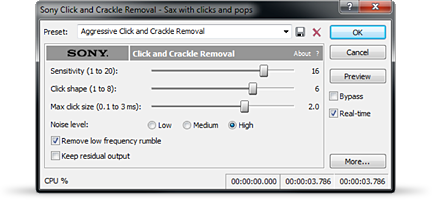
- #VOICE NOISE REDUCTION SOFTWARE HOW TO#
- #VOICE NOISE REDUCTION SOFTWARE FOR MAC#
- #VOICE NOISE REDUCTION SOFTWARE SOFTWARE#
- #VOICE NOISE REDUCTION SOFTWARE WINDOWS#
Besides, it can be used as a plug-in for Ps and Lr. Regardless of this, Luminar more than makes up for these drawbacks by offering one-of-a-kind features and filters. It’s slower at photo editing and also doesn’t have some powerful tools for managing files in the library, like search, face-recognizing tool, and geo-tagging.
#VOICE NOISE REDUCTION SOFTWARE WINDOWS#
Unfortunately, its Windows version is underwhelming. The main advantage of Luminar is that it has an amazing user-friendly interface, great tools for auto-correction, and stunning plug-ins.
#VOICE NOISE REDUCTION SOFTWARE SOFTWARE#
Luminar was released in 2016 by Skylum, the US software developing company, and has been advertised as universal software for editing photos, an alternative to Lightroom.
#VOICE NOISE REDUCTION SOFTWARE FOR MAC#
Skylum Luminar Best noise reduction software for Mac with a Free Trial

In this case, you will be able to get an acceptable quality, however, other softwares can probably do a better job.ģ. Overall, this is the great universal noise reduction software unless the photographs are too grainy.

The Detail and Contrast sliders will help you to perfect the image further. Make sure you’re careful with this slider because overdoing it will make your image look artificial. If it’s the noise from light, you will need the Luminance slider (set to 0 when you start editing). Detail and Smoothness sliders will help you get additional control of the image.

Thus, if you want to decrease the color/chroma noise, you will only work with the Color slider, which is set to 25 by default. You can work with different sliders depending on the type of noise in the image and the effect you want to achieve. Look for the corresponding sliders in the Detail tab. If the background noise is consistent and steady and not too loud compared to the voice, noise reduction should work perfectly.Lr is one of the programs that cope with image editing perfectly. That is why I put so many warnings of why it was so important to make sure you highlight ONLY the steady background noise. So try to minimize the noise before you record as much as possible.Īnother potential cause of weird sounding after-effects of noise reduction is if you accidentally picked up some of your own voice in the noise profile sample at the beginning of this process. So people often call this weird sound "the swirlies," because it sounds a bit like swirling water. It often sounds like the audio is under water. The usual result of trying to remove too much noise is that the audio left behind sounds weird. If there is too much noise, it will be very difficult for Audacity (or any software) to separate noise from the GOOD audio - your voice, or whatever you recorded. In the drop-down, choose "Noise Reduction." In the window that pops up, click on the button that says "Get Noise Profile." See the picture below.įor the best possible results, the noise should not be too loud to begin with. Once you have at least half a second of ONLY background noise highlighted, it's time to feed that to Audacity.Ĭlick "Effect" in the Audacity Menu.
#VOICE NOISE REDUCTION SOFTWARE HOW TO#
It's probably the most common mistake people make when trying to figure out how to get rid of background noise. And that would sound terrible.īelieve it or not, this is really common. So if there are any breaths or voice traces in this selection, Audacity will try to remove those. This is where you are telling Audacity what you want removed. And the most important thing of all is to never, EVER (getting the idea? :-)) highlight any part of your voice during this step. IMPORTANT: Make ABSOLUTELY sure you do not highlight any breaths or bumps or any sounds other than the steady noise in the room or mic. Choose a Sample of ONLY NoiseĪfter you have finished recording, highlight (click and drag) at least half a second of JUST background noise (no voice or anything else you are actually TRYING to record) to select noise. It is crucial that you record a sample of the steady sound of the noise in your room and/or mic. I recommend recording 3-5 seconds of silence at the beginning of your recording session so that you can record only noise.ĭuring this few seconds before you start speaking, make sure you don't take any audible breaths or make any other noises like lip-smacking or sniffing or bumping against the microphone, etc. So the very first thing you need to do is find a section of your recording where there is no voice, or breath, or anything EXCEPT noise. In order for Audacity to remove noise from your voice recording, it needs to know what "noise" sounds like. OK, here is how to use noise reduction in Audacity. But the process works pretty much the same way in any program.įor some information on the most current and much better noise reduction tool in Audacity, check out our post - New Noise Reduction Tool In Audacity. I'll show you how to get rid of background noise using the open source software, Audacity, which is free.


 0 kommentar(er)
0 kommentar(er)
